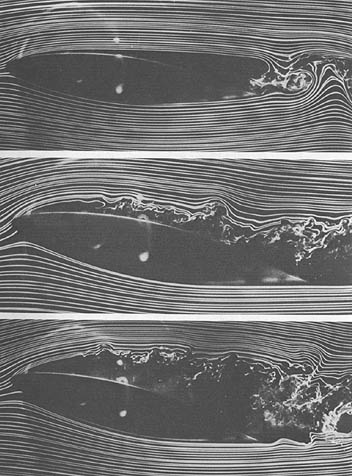The Stall
The stall of a wing is worthy of its own article, we have covered enough to dive into how and why a wing will stall, the important part to understand is the angle of attack, if you don't already know about it then read here first.
A stall is defined as a point where there is insufficient lift created by the wing to support the weight of the aircraft, a stall will almost always result in the nose of the aircraft pitching down and as a result altitude will be lost until the wing recovers sufficiently to support the weight of the aircraft thus returning to straight and level flight.
Remembering that there are four opposing forces at work on any object that fly's, anything. They are thrust and drag, lift and weight, these four forces are constantly trying to oppose each other, thrust needs to overcome drag for the aircraft to move forward, and lift needs to be greater than weight to be able to gain height. Time to tie this back to the stall, when all four forces are in equilibrium the aircraft can be seen as flying straight and level, that is, airspeed and altitude are constant, the aircraft is in cruise. In this state the airflow over the wing (assuming the aircraft is flying at the optimum speed etc.) is at its most efficient, the air itself is moving over the wing smoothly and cleanly.

The boundary layer now becomes important, if we upset the equilibrium, let's say we reduce thrust but want to maintain the same altitude, as thrust is reduced the aircraft will slow down due to the drag holding it back, as the airflow slows over the wing so will the amount of lift. There is another way to increase lift, change the angle of attack, the angle between the chord line and the direction of airflow. As the angle increases the air will naturally speed up over the top of the wing therefore increasing the amount of lift, however there is a downside to this, as the angle increases the ability for the air to maintain its smooth path over the wing decreases, this is where the what is called the boundary layer separates.
The boundary layer is the fine layer of air running along the surface of the wing, very close to the surface that is, as the angle of attack increases the boundary layer begins to separate, see the image above for three different angles of attack and the relevent airflow. As this happens drag increase due to the turbulence created, as the angle of attack increases even further the boundary layer separation point moves towards the leading edge, further increasing the drag and therefore lift is reduced. This happens to the point where the lift reduces and the aircraft's weight is no longer supported, the nose of the aircraft, which is now pointing high due to the high angle of attack (usually around 16 degrees) will suddenly drop, it is this point that the aircraft has stalled.
As the nose drops the airflow over the wings begins to restore, airspeed increases, the boundary layer is also restored, after losing some height the aircraft will return to equilibrium - straight and level flight. This is by no means an exhaustive coverage of the stall, there are so many other influences at work, however this article would have given you the basics, this article was deliberately written as a narrative, I believe there are plenty of purely technical descriptions out there, but a good flowing description of the stall process at work - hopefully has been delivered.